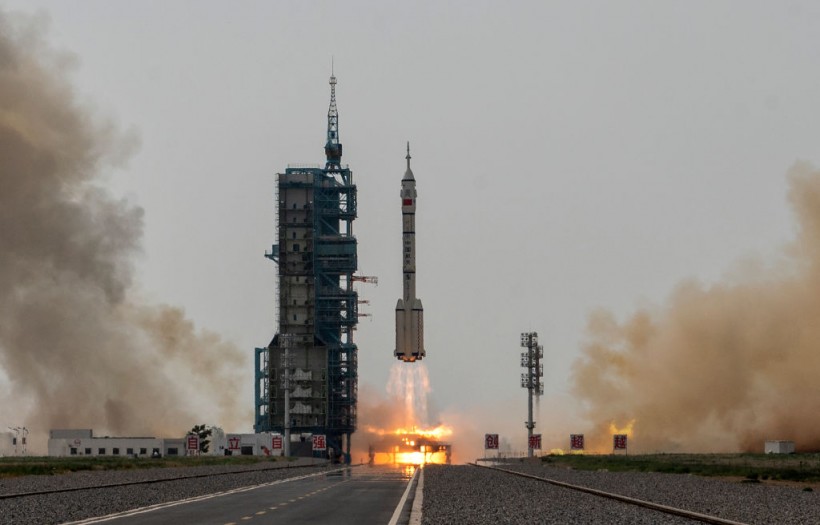China launches a relay satellite enabling communication with the moon's far side, advancing its lunar exploration endeavors. The China National Space Administration (CNSA) confirmed the successful deployment of Queqiao-2's solar wings and communication antennas, marking a significant achievement. Additionally, smaller satellites Tiandu-1 and 2 were deployed to orbit the moon, tasked with validating navigation and communication technologies.

(Photo : Kevin Frayer/Getty Images)
Queqiao-2 Launches: Enabling Lunar Exploration Progress
Queqiao-2, also known as Magpie Bridge-2, embarked on its journey atop a Long March 8 rocket from Wenchang Satellite Launch Centre on Hainan Island, Southern China, at 8:31 a.m. local time on Wednesday, as confirmed by the CNSA.
Weighing 1.2 tons, the satellite is crucial for facilitating communication during the Chang'e-6 mission, slated to explore the moon's far side in the first half of this year. Given the moon's perpetual face-away from Earth, Queqiao-2 will serve as the intermediary for relaying signals to and from the planet.
China, having achieved the historic feat of landing on the moon's far side in 2019, aims to further its lunar exploration with the Chang'e-6 mission, which will endeavor to collect and bring back samples. With the capability to relay signals continuously for up to eight hours, Queqiao-2 is poised to support various future lunar endeavors, including the establishment of a prototype base at the lunar south pole by 2028.
Accompanying Queqiao-2 on the Long March rocket were experimental technology satellites Tiandu-1 and 2, set to test lunar navigation and communication technologies.
Given the Moon's tidally locked rotation, where one side perpetually faces Earth, Queqiao-2's predecessor, Queqiao, was launched in 2018 to support the Chang'e 4 mission, marking the first soft landing on the moon's far side. Both China and the U.S. are advancing plans to send astronauts to the moon by the decade's end.
Amidst a flurry of space activities, China aims to conduct a record 100 missions this year, a significant increase from the previous year, with a focus on commercial spaceflight as a burgeoning industry, as highlighted in Premier Li Qiang's report to China's National People's Congress.
Queqiao-2: Pioneering Lunar Missions, Managing Challenges
Queqiao-2's operational lifespan of at least eight years positions it to support lunar missions extending beyond 2030, coinciding with China's anticipated moon landing missions involving astronauts. Expected to orbit near the moon's south pole, Queqiao-2 will facilitate the construction of China's research outpost in that region.
Its elliptical orbit, as outlined by its designer Zhang Lihua in a 2021 publication in Space: Science & Technology, will enable communication between Earth and the moon for over eight hours during its highest point, reaching up to 8,600 km above the lunar surface.
While the majority of launches are overseen by China Aerospace Science and Technology Corp., nearly 70 are scheduled, with the remainder to be conducted by Chinese space startups, as part of Premier Li Qiang's recognition of commercial spaceflight as a burgeoning industry.
However, the increase in space activities raises concerns, with neighboring countries potentially affected by falling rocket debris. Recently, the Philippine Space Agency confirmed a Chinese rocket launch, noting projected debris falling near Panay Island, raising safety concerns for ships, aircraft, and other vessels passing through the area.
With the possibility of uncontrolled re-entry into the atmosphere, such incidents underscore the need for international cooperation and transparency in space endeavors.
RELATED ARTICLE: China Continues Space Race, Plans To Land Astronauts on Moon Before 2030
Check out more news and information on Space in Science Times.














